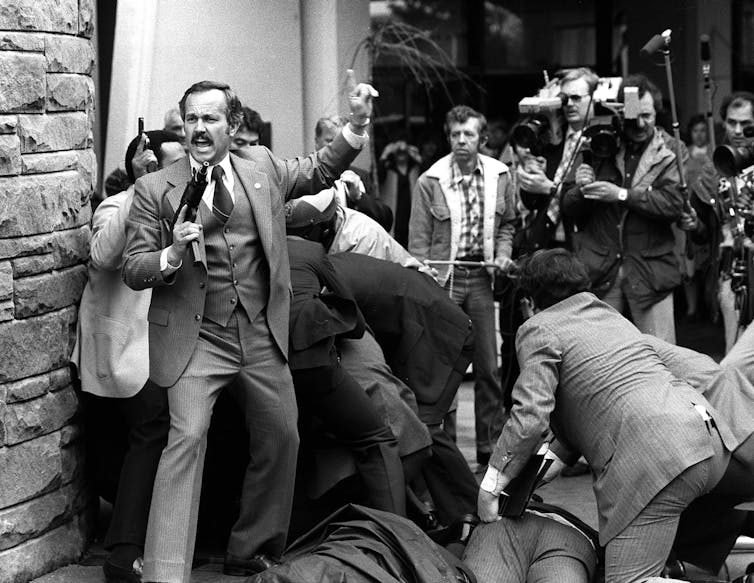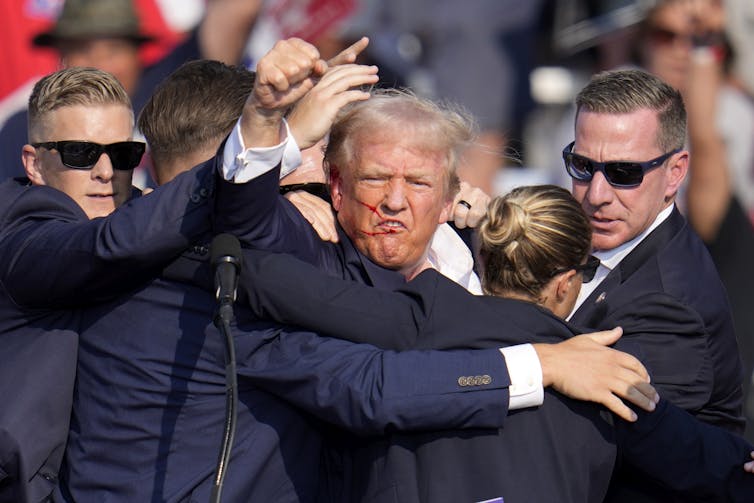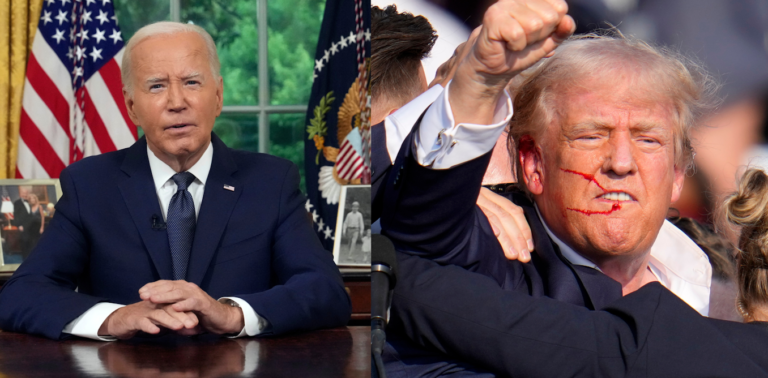It’s tempting to draw grandiose conclusions from this weekend’s assassination attempt on former President Donald Trump. The crude rhetoric currently prevalent in American politics, not to mention the January 6, 2021, attack on the Capitol, provides ample fodder for such speculation.
The fact is, while this shooting is horrific, it is not at all surprising in the context of American history or the current presidential campaign.
Divisive and extreme political campaigns from both parties are now commonplace, the criminal charges against President Trump and President Joe Biden’s son Hunter have been politicized, and American voters are more likely to vote against candidates from the other party than for candidates from their own party.
To be sure, activists and officials in both parties will try to use the shooting to their electoral advantage by appealing to voters’ emotions. Politicians will likely highlight the horror of the assassination attempt, declare various phenomena “existential threats” or use similar apocalyptic language.
But the overall political environment, while uncomfortable, embarrassing, and at times deeply concerning, is not entirely unprecedented or even an extreme example in American political life.
Simply put, American politics has always been a bloody battle.
Mark Schiefelbein/AP
History of political violence
In the second half of the 20th century, a U.S. president was assassinated (John F. Kennedy), another was wounded (Ronald Reagan), another was targeted (Gerald Ford), two major presidential candidates were assassinated (Robert F. Kennedy) or nearly assassinated (George Wallace), and numerous other plots were thwarted.
American politics from the 1960s through the early 1980s were incredibly divisive and violent. In 1971 and 1972 alone, there were over 2,500 politically motivated bombings in the United States (about five per day), most of which were perpetrated by left-wing protesters opposed to the Vietnam War.

Ron Edmonds/AP
The United States has become increasingly polarized in recent years, and today’s political environment is once again volatile.
In 2011, Rep. Gabby Giffords was nearly shot and killed by a paranoid schizophrenic man at an event in Arizona, and in 2017, a Bernie Sanders supporter opened fire on several Republican lawmakers and staff, nearly killing Rep. Steve Scalise of Louisiana, who is now the House Majority Leader.
And of course, the storming of the Capitol, instigated by President Trump, during the counting of the electoral votes for the 2020 presidential election, gives millions of Americans ample reason to believe that President Trump and his supporters remain a threat to the democratic process.
Democrats’ Opportunity
Another immediate consequence of the assassination attempt is that it will temporarily divert public attention from Biden’s debate performance in late June, but it will not resolve the political dilemma for Democrats.
Given Biden’s age and apparent decline, the White House’s efforts to raise awareness of his fitness to serve as president are unlikely to be enough to convince his Democratic colleagues that he can beat Trump in November.
Polls had suggested Biden was likely to lose the election even before the shootings, and the attack will likely galvanize Trump’s supporters and encourage other candidates, making it even harder for Biden to lose.
Many Democrats believe another candidate, such as Vice President Kamala Harris or another prominent Democrat, has a better chance of winning.
The shooting of President Trump has given Democrats a new opportunity to reset the campaign and make a broad appeal for calm and national unity to American voters.
They will need to soften their rhetoric about Trump posing a threat to democracy and instead argue that his policy agenda is desirable for the American people.
The question is whether they can quickly identify a new candidate to push this new message, which remains the biggest question in American politics even after Trump’s demise.
The Republican Challenge
Trump’s near-death experience would energize a campaign that has already portrayed him as a victim of the Democratic Party and the establishment: A photo of him, bloodied and with his fists raised in defiance after being shot, is worth more than hundreds of millions of dollars in campaign ads.

Jean J. Puskar/AP
But Republicans and Trump ardent supporters will now face a different challenge: Whether the shooter was politically motivated or not, the urge to exploit the shooting will be much harder to resist.
Some Trump supporters, including Republican Senator J.D. Vance, who is seen as a leading candidate to be Trump’s vice presidential nominee, are already blaming Democrats for the incident.
Others, including House Speaker Mike Johnson, have criticized Biden for saying before the assassination that he would “target” Trump.
This politicization of the shootings may succeed in increasing turnout among Trump supporters in November, but it could also invite greater vitriol and deranged rhetoric from the right.
For example, any attempt to turn this tragedy into an attack on the Democratic Party, Biden and his character could backfire and only remind voters of Trump’s pernicious tendency to stomp on division.
Instead, Trump has an opportunity to demonstrate real leadership and reach a broad range of undecided and independent voters. With a stronger base of support than ever before, can Trump reach out to persuade moderate Republicans and disaffected Democrats? Can he tone down his antagonistic rhetoric and demonstrate he can win support across party lines?
Reagan did so, at least in tone, if not in policy agenda, after he nearly died from an assassin’s bullet in 1981.
So can Republicans and Democrats use the tragic Trump shooting to pivot to a more positive message? American voters, and America’s friends and allies around the world, surely hope so.
The day after the shooting, Biden called President Trump to express concern for his health and discuss the tragic incident. Perhaps this small act of bipartisanship and civility can serve as an example for all to follow.


